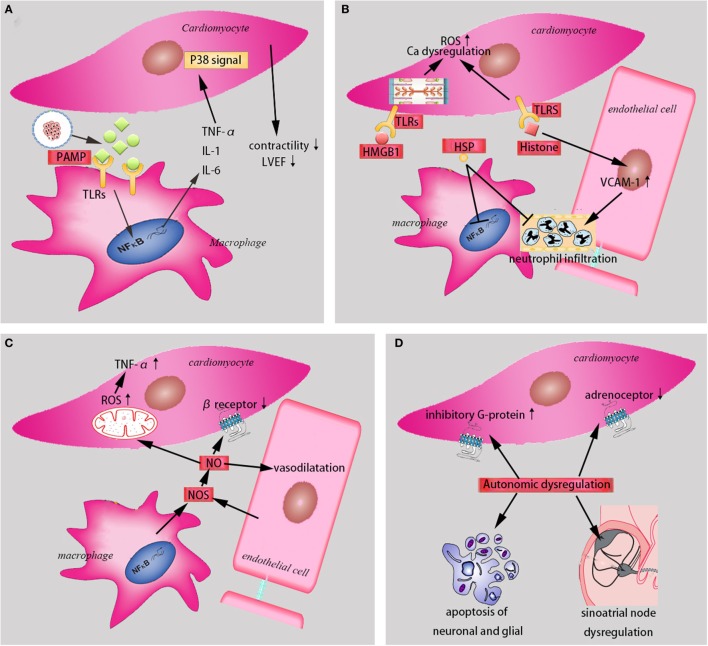Figure 1.
The mechanisms in the sepsis-induced cardiomyopathy. (A) PAMPs and cytokines (TNF-α, IL-1, and IL-6) contribute to sepsis-induced cardiomyopathy (SIC). (B) Damage-associated molecular patterns (HMGB1, HSP, and histone) induce SIC through different mechanisms. (C) NO and NOS are involved in SIC. (D) Autonomic dysregulation play a significant role in SIC. PAMP, pathogen-associated molecular pattern. TNF-α, tumor necrosis factor-α. IL-1, interleukin-1. IL-6, interleukin-6. TLRs, toll-like receptors. NF-κB, nuclear factor-κB. LVEF, left ventricular ejection fraction. HMGB1, high mobility group protein B1. HSP, heat shock protein. ROS, reactive oxygen species. VCAM, vascular cell adhesion molecule. NO, nitric oxide. NOS, nitric oxide syntheses.

